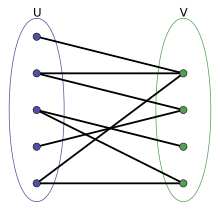One color has more nodes, the other less; so we have a compression expansion, two sets of statistics. Stack bipartites and you impose connectivity requirements between layers.
The theory of everything says elasticity adjusts to make self adapting statistics. The compression ratios up or down, can be set to some quant that meets a 'settable' Gibbs state, the elements are rational and finite.
An information metrics can find the Hamming like bounds between layers. Bipartitie matters because somewhere, I hope, is a theory that multi-colored sets can be decomposed to two colored, within some precision.
The Skellam distribution is the distribution of duplicate school girls in those links. The idea of the Hurwitz theorem is to add separate quantum numbers as each Lagrange numbers go up. So the silver ratio can pack more duplicate school girls in those
I think the idea is that a small compression ratio packs the packs
So what is going on is that the proof that a multi-colored bipartite can be split into a hierarchy of two colors. I think that proof is also the method of the self adapting statistics use to maintain equipartition. There in lies the relationship between queueing, Hurwitz, and information metrics. A two color graph has a Gibbs state determined by the queues on the connecting links. In that state there is no graph re-configuration that queues up more duplicates.
Something like that.

No comments:
Post a Comment